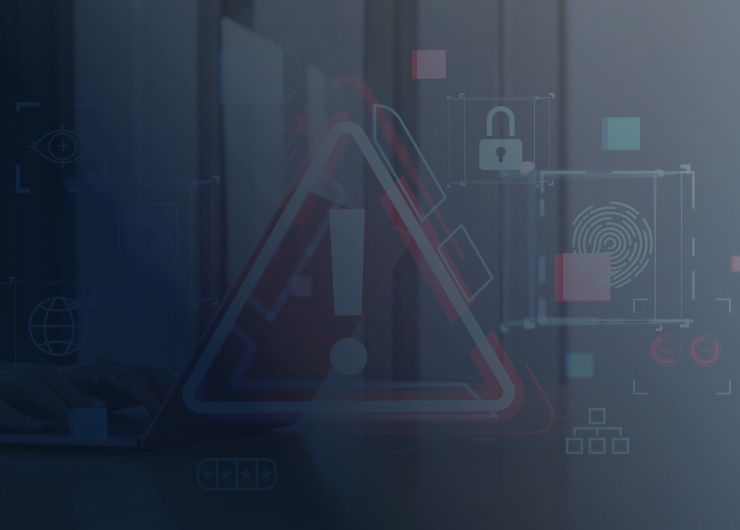Even a few seconds’ IoT outage matters; it can have far-reaching impact on customers, operations and business profitability. Everything possible must be done to limit the risks, but IoT solutions are multidimensional. They can experience downtime because of a network outage or cyberattack, even damage caused by the environments they operate in. These risks test your IoT resilience every day and are often outside your control. To maximise uptime you need resilience built-in, at the device, network and cloud level, as well as within your own operational processes.
Top 3 takeaways on surviving an IoT outage
- Risks to the IoT test resilience every day and are often outside your direct control. To maximise uptimeyou need security and resilience built-in at the device, network and cloud level, as well as in operational processes
- Resilience begins with an understanding of risk. IoT outages can result from electro-mechanical failure or damage, inadequate maintenance, power/network outages, environmental/natural disaster and cyberattacks
- Best practices for high-availability IoT include load balancing, auto-scaling, automated failover, security measures, performance optimisation, monitoring and predictive maintenance, self-healing systems and disaster recovery. Full details can be found in the guide to maximising uptime for IoT.
Why high availability for IoT matters
IoT downtime jeopardises customer relationships and your business’ revenue. It can disrupt operations and come at a financial and reputational cost that can be catastrophic.
The IoT connects critical applications in healthcare, security, energy and more that must stay online. Rule makers recognise this and impose regulations and standards to safeguard their availability. These mandates cover risk management, the supply chain and application and device security. IoT downtime therefore also threatens business compliance by demanding levels of service that call for high availability and rapid, automated recovery from an outage.
With all this at risk, it’s little surprise that performance/reliability is the number one factor businesses look for in an IoT connectivity partner - 23% in Wireless Logic/Kaleido Intelligence’s research ranked it number 1, a far higher percentage than for any other single factor.
Clearly, whether you’re monitoring healthcare equipment, supporting smart building services, running a fleet of vehicles or managing a network of electric vehicle chargers, you must be able to count on the resilience of your IoT infrastructure.

The causes of IoT outages
That resilience begins with an understanding of risk. IoT outages can result from a range of factors including:
- electro-mechanical failure or damage
- inadequate maintenance
- power/network outages
- environmental/natural disaster
- cyberattacks.
To mitigate these risks, you need measures for devices, networks, the cloud environment and operational processes that will build security and resilience into your IoT solution. The goal is high availability and rapid, automated recovery should an outage occur.
Best practice for high-availability IoT
The top service providers in IT, IoT and Cloud domains will have strategies to deliver this. The best practices to aim for cover:
Infrastructure resilience
Networks and systems should be designed with redundancy to prevent single points of failure. Load balancing and auto-scaling should handle demand fluctuations while georedundancy and automated failover should keep service going during an outage.
Security
Security must be built-in to every aspect of your IoT solution. A security framework functions as your checklist, covering identity and access management, multi-factor authentication, role-based access control, encrypted data, vulnerability scans, endpoint protection, network segmentation and patch management.
Service performance optimisation
Content delivery networks, caching and edge computing help optimise performance, as does regular capacity planning. Measures to rate-limit prevent overloading and improve system efficiency.
Monitoring and predictive maintenance
IoT infrastructure, applications and devices can be monitored real-time with the correct tools. AI-driven predictive analytics can anticipate failures too. By centralising log management, you can detect issues more quickly and automate alerts and incident management.
Automation and orchestration
Tools are available to automate provisioning and ensure rapid, reliable software updates. Self-healing systems can automatically detect and correct issues.
Disaster recovery
A comprehensive disaster recovery plan should include frequent backups and procedures should be tested regularly.
Change management and governance
Formal change control procedures help reduce risk when making updates. Configurations’ version control must be maintained and systems audited for compliance with relevant regulatory standards.
Customer communication and support
Customers should be kept informed during any incidents through status pages and regulator communication. Ideally, self-service tools for customers will equip them to monitor their services as well. Customers can be notified of potential issues through automated alerts.
Sustainability
Energy usage in data centres should be optimised through virtualisation, containerisation and power-efficient hardware, and consumption monitored to understand progress towards sustainability goals and a reduced environmental footprint.

Wireless Logic’s comprehensive guide to maximising uptime for IoT goes into great depth on what devices, networks and operational processes need to achieve high availability and resilience. Get it for free here for:
- a list of regulations at play
- a detailed set of questions to ask your prospective IoT communications service provider
- a summary of available wireless technologies and their suitability for different use cases
- design considerations to maximise security
- advice on what devices should do to recover from an outage.
The guide also covers advanced network and SIM capabilities that help meet resilience aims and achieve compliance and competitive differentiation. For example, the physical security and reliability benefits of embedded eSIMs and integrated iSIMs provide a significant advantage over removable SIM cards, while remote SIM provisioning (RSP) is ideal for managing the full SIM lifecycle from factory to field.
The IoT is used for safety critical applications, optimising business operations, delivering innovation and providing the experiences customers have come to expect. In all cases, resilience is vital, and it is now increasingly mandated by enterprises and regulators alike. IoT solutions are often complex, they comprise devices, networks, software, applications and invariably cloud environments. The risks are many and varied too and occur at every link in these complex IoT value chains. Cyberthreats also threaten the security and uninterrupted operation of the IoT.
To understand how to achieve the reliable, secure and resilient IoT you need to meet your business objectives, serve customers, be compliant and differentiate in competitive markets, get your free guide to maximising uptime for IoT.
Wireless Logic can help you with secure and seamless IoT services, so you can focus on what matters most – your business. Talk to the Wireless Logic experts and start your free trial.
Frequently Asked Questions
What causes IoT outages?
IoT outages can result from electro-mechanical failure or damage, inadequate maintenance, power/network outages, environmental/natural disaster and cyberattacks.
How can I prevent IoT outages?
You cannot eliminate the risks of IoT downtime entirely, some risks are outside of your direct control, but you can maximise uptime by building security and resilience in at the device, network and cloud level, as well as in operational processes.
What can I do to make my IoT resilient against outages?
There are many measures you can build in when you design and implement your IoT, and many practices you can adopt to maximise resilience. Measures include load balancing, auto-scaling, automated failover, security measures, performance optimisation, monitoring and predictive maintenance, self-healing systems and disaster recovery. Full details can be found in the guide to maximising uptime for IoT





